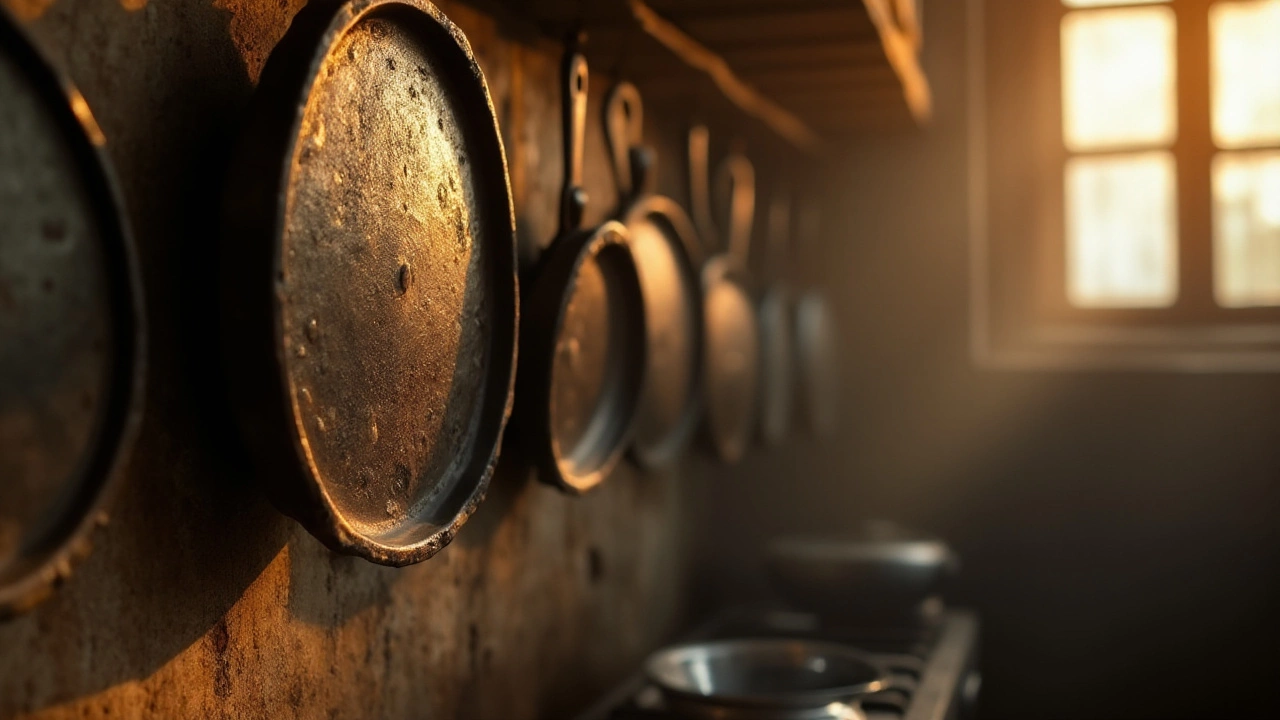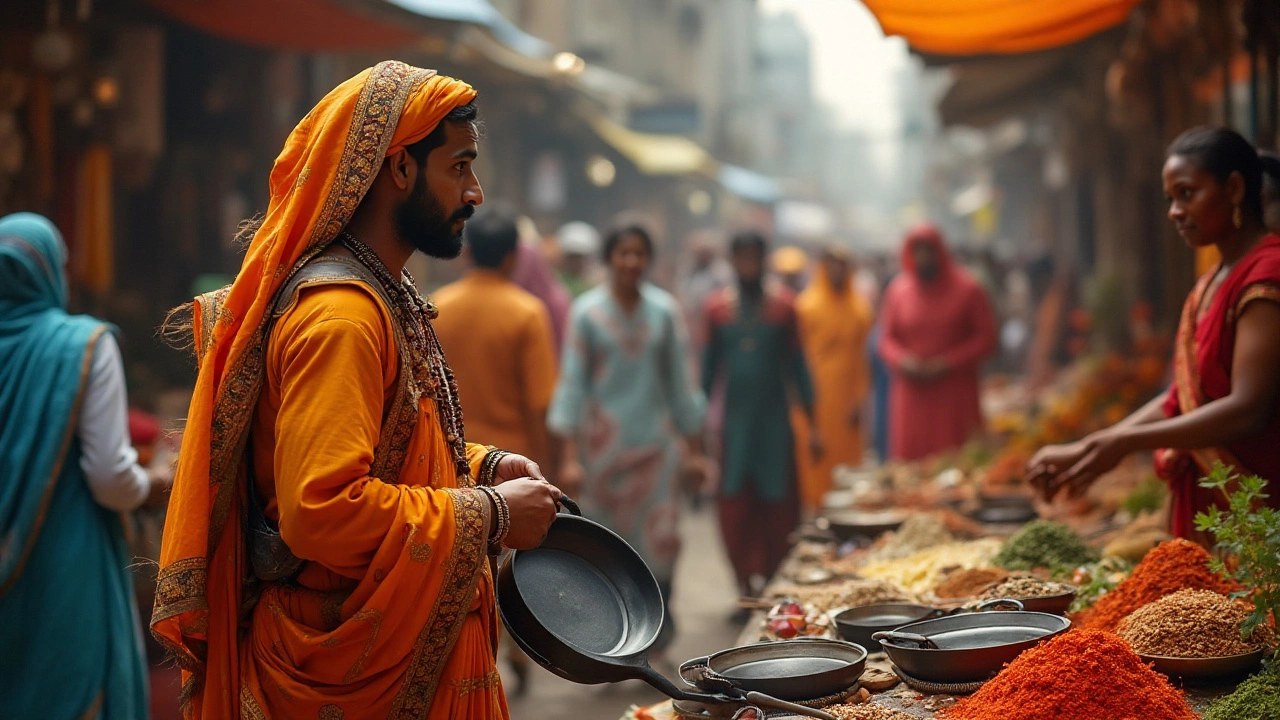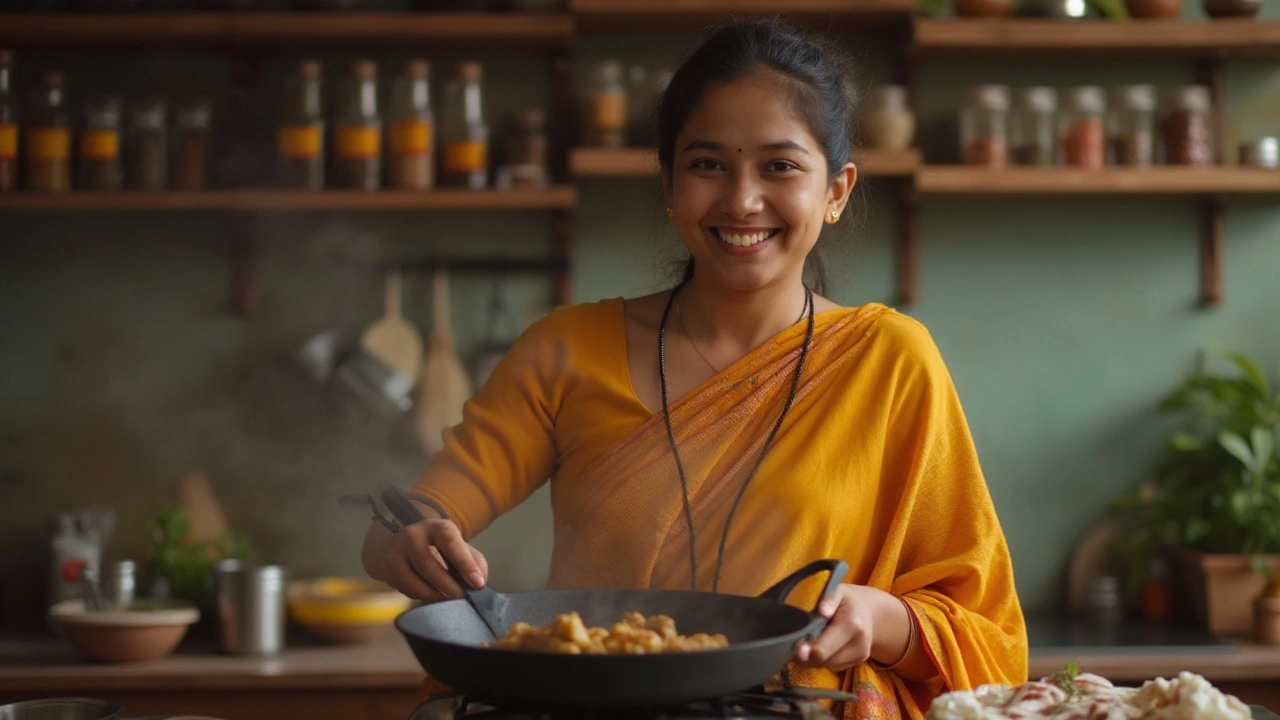The Quest for the Perfect Cast Iron Skillet: What Kitchen Enthusiasts Crave

For those who cherish the art of cooking, a cast iron skillet often ranks high on the list of must-have kitchen tools. Revered for its unmatched durability and versatility, this cookware has been a staple in kitchens for generations, winning fans from the most novice home cook to the seasoned chef. But what exactly makes these skillets such an essential part of the culinary experience?
Diving into the enduring significance of cast iron skillets, this article seeks to unravel the culinary magic captured within their hefty frames. As more home cooks hunt for equipment that will not only perform well but also withstand the test of time, the cast iron skillet continues to shine. Whether you're searing a steak or baking a pie, one thing is certain: the journey to find that perfect piece of cast iron is one paved with flavorful adventures and timeless charm.
- The Enduring Appeal of Cast Iron Skillets
- Historical Significance and Evolution
- Benefits of Cooking with Cast Iron
- Selecting the Best Cast Iron Skillet
- Caring for Your Cast Iron Skillet
The Enduring Appeal of Cast Iron Skillets
The allure of the cast iron skillet isn't just rooted in its robust functionality; it's a blend of history, functionality, and the sheer joy of cooking. Even in an age where modern technology offers non-stick surfaces and dishwasher-safe cookware, the cast iron skillet retains a special place in the hearts of cooks worldwide. Its longstanding presence in kitchens can be attributed to several compelling factors that make it irreplaceable. From its unique ability to improve with age and use, to its unrivaled heat retention, this sturdy piece of kitchenware has many acolytes. The more you cook with it, the better it gets, a claim few kitchen tools can make with as much certainty.
Unlike many kitchenware items that lose their luster over time, the cast iron skillet becomes a better companion with every meal prepared. Its non-stick surface improves through the process of seasoning – a simple but effective method of oil bonding with the iron through heat. This not only enhances its cooking capabilities but also contributes to a healthier way of cooking, as it requires less oil over time. The skillet is also incredibly durable; when well-maintained, it can outlast generations, turning kitchen experiences into heirlooms and lending a taste of history to even the simplest dishes. Bon Appétit magazine once noted, "The secret to making some of the best any-time foods is often nothing more than a good piece of cast iron."
Cooking with a cast iron skillet, it's not just about the food; it's about the connection to every family meal and life’s shared moments across the dinner table." – A culinary historian
There's a near-magical characteristic to how these skillets handle heat. Their capacity to maintain and distribute heat evenly transforms everyday cooking methods, allowing for perfect searing of meats and crisping of vegetables. This even heat conduction is why cast iron skillets are cherished in baking, too, offering pie crusts an unrivaled flaky golden-brown finish. As such, they've become the unsung hero in a myriad of recipes, from savory breakfasts to sumptuous desserts. Many chefs also love the way a cast iron skillet can transition from the stove to the oven effortlessly, making it a perfect tool for recipes that demand multi-step cooking methods.
Yet, beyond its functionality lies a sentimental charm. For many, using a cast iron skillet is a nod to tradition, a continuation of skills and wisdom imparted by parents or grandparents. The tactile nature of cooking with cast iron—the heft in the hand, the sizzle of the sear—offers a deeper experience that is both mindful and rewarding. This seamless blend of practicality and heritage is proudly reflected in the choice of many home cooks and professional chefs alike. It's not simply about the meals it helps create, but the stories it continues to tell throughout the years. So, while kitchen technology evolves, the love for the cast iron skillet remains ever timeless.
Historical Significance and Evolution
The cast iron skillet has a storied history that dates back centuries, embodying the rich tapestry of culinary evolution. These hardy cooking vessels emerged into prominence around the 18th century, becoming indispensable tools for households across Europe and North America. The roots of cast iron cookware can be traced even further back, to ancient China, where its early adoption set the stage for global dissemination. The transition from bronze to cast iron was a pivotal moment in culinary technology, given iron's superior heat retention and durability. Cooks of the early modern era celebrated the skillet's ability to evenly distribute heat, a trait that remains a cornerstone of its appeal today. Families passed these skillets down through generations, a testament to their robustness and the emotional connections built around them. Cooking with cast iron became an art of heritage, where recipes weren't just followed, they were handed down, absorbing stories and flavors over time.
During the Industrial Revolution, the process of manufacturing cast iron became more streamlined, making these beloved skillets more accessible to the general populace. Iconic brands emerged during this period, etching their names indelibly into the culinary landscape. It's interesting to note how the production methods evolved, from painstakingly handcrafted processes to more efficient foundry techniques. Yet, despite technological advances, the essence of what makes a cast iron skillet invaluable remained unchanged. The early skillets were not only about function; they were a reflection of the era's craftsmanship and attention to detail. As societal tastes shifted, these skillets adapted, retaining utility while embracing new design elements. Even amidst innovation, the lure of traditional cooking and the slow-food movement saw a resurgence in the popularity of these age-old pans. A significant quote from the iconic first lady of American cooking, Julia Child, encapsulates this sentiment perfectly:
"Like a fine wine, it improves with seasoning."
Cast iron’s journey hasn’t been without challenges. The advent of non-stick cookware in the mid-20th century posed a significant threat to its dominance. Yet, as awareness about the health implications and environmental impact of some coatings spread, many returned to the reliability and safety of cast iron. The resurgence was buoyed by a growing appreciation for sustainable living and heirloom-quality goods. People came to see cast iron not just as a piece of cookware, but as a connection to tradition, a movement back to basics in a rapidly modernizing world. The emotional resonance of cooking in a skillet that your grandfather might have used cannot be overstated. It's this blend of functional excellence and emotional depth that firmly entrenches the cast iron skillet in both historical and contemporary kitchens.

Benefits of Cooking with Cast Iron
Cooking with a cast iron skillet offers numerous advantages that have stood the test of time. One of the most significant benefits is heat retention. Cast iron skillets are known for their ability to hold heat exceptionally well. Once heated, they maintain a steady temperature, which is perfect for searing meats to achieve that coveted crisp and caramelized crust. The consistent heat distribution also means more evenly cooked dishes, making it a favorite among chefs for tasks like frying and browning.
Another reason for the enduring popularity of cast iron skillets is their versatility. These skillets are adaptable to various cooking techniques, including frying, sautéing, baking, and roasting. They're one of the few kitchen tools that can seamlessly transition from stovetop to oven, offering a broad range of culinary possibilities. This versatility not only saves time but also reduces the need for multiple cookware pieces, making them a smart, space-saving choice for any kitchen.
In addition to their functionality, cast iron skillets are also renowned for their durability. When properly maintained, they can last for generations. Unlike non-stick pans that may wear out over time, a well-cared-for cast iron skillet improves with age, developing a natural, non-stick patina. This characteristic not only enhances the cooking process but also adds a unique flavor to dishes that many culinary enthusiasts appreciate. According to a popular chefs' saying, 'A well-maintained cast iron skillet not only cooks, it contributes.'
Health-conscious cooks can also find benefits in using cast iron cookware. Cooking with cast iron can increase the iron content of food, a vital mineral that plays a key role in maintaining energy levels and supporting the immune system. This is particularly beneficial for those with iron deficiencies, as trace amounts of iron from the skillet can enrich your meals naturally. It's a delightful merging of health benefits with practicality, fostering a cooking environment where nutrition and taste go hand in hand.
Maintaining a cast iron skillet is straightforward, though it requires a bit of attention. Proper care involves seasoning the skillet, which creates a protective layer against rust and forms a natural, non-stick surface. Regular seasoning enhances the skillet's functionality, allowing it to serve not just you but potentially the next generation of cooks in your family. As one culinary expert puts it, "When you cook with cast iron, you're not just preparing a meal; you're joining a longstanding tradition of culinary craftsmanship."
Selecting the Best Cast Iron Skillet
Embarking on the quest to find the cast iron skillet that suits your cooking style can feel like choosing a new best friend. After all, this piece of cookware is destined to become a kitchen companion for life, often being passed down through generations, withstanding the rigors of daily use, high heat, and all types of cooking techniques. To start, consider your skillet's size and weight, as cast iron skillets come in various diameters ranging from a petite 6 inches to a grand 15 inches. The ideal choice generally complements the number of mouths you're feeding and the type of meals you typically create. For most household kitchens, a 10 to 12-inch skillet balances versatility with ease of handling. Equally crucial is its weight. Some cast iron enthusiasts enjoy a heftier skillet for its heat retention, while others may prefer lighter versions for ease of use.
Beyond size, the origin and brand of your skillet may influence your decision. Heritage brands like Lodge have been in the game for over a century and are renowned for reliability and cost-effectiveness, making their products a popular entry point for new cast iron users. However, for those seeking a touch of luxury or artisanship, there exists a niche for premium brands like Staub and Le Creuset, famous for their enameled exteriors and colors. Particularly and enamels are chosen for their aesthetic appeal and resistance to rust. Then there is the choice between a raw versus pre-seasoned skillet. Though some home cooks enjoy the ritual and control of seasoning their cast iron from scratch, a pre-seasoned option is quick and convenient, providing a ready-to-use surface from the get-go.
"A good skillet is a cook's best friend," says culinary author Karen Page. Her words echo the sentiments of many who place a high value on well-made cooking tools.Material thickness and manufacturing methods also play a role. Spun cast iron skillets, for example, tend to be thinner and lighter, while traditional sand-cast versions retain more heat. Newer innovations help evenly distribute heat, ensuring that the center of your skillet does not scorch while the edges cool ineffectively. As you narrow down your choices, considering these factors can help make an informed decision, ensuring each meal prepared in your kitchen carries the allure and flavor only a cast iron skillet can offer. A detailed comparison of popular brands and their attributes can offer clarity in making a choice:
| Brand | Weight (lbs) | Surface | Price Range ($) |
|---|---|---|---|
| Lodge | 8 | Pre-seasoned | 20-60 |
| Staub | 9.8 | Enameled | 150-300 |
| Le Creuset | 8.5 | Enameled | 130-350 |
Taking the time to research and reflect on how your cast iron skillet will be used ensures you add the right personality to your culinary toolkit. In the end, the most popular skilet will seamlessly integrate into your lifestyle, promising a lifetime of hearty meals and cherished kitchen memories.

Caring for Your Cast Iron Skillet
Delving into the process of maintaining your cast iron skillet is akin to mastering a time-honored art. The secret lies in consistency and understanding the unique nature of cast iron. These skillets demand attention but reward you tenfold with their enduring performance and flavor enhancement capabilities. The first step after acquiring a new cast iron skillet is seasoning. This involves baking a thin layer of fat over the skillet, producing a natural, non-stick surface. To begin, wash the skillet with warm water and a bit of soap to remove any protective coating it might have. Dry it thoroughly, then apply a light coat of vegetable oil or melted shortening all over the inside and outside surfaces. Place it upside down in your oven at 375°F for an hour. Make sure to lay a sheet of foil underneath to catch any drips.
Cleaning your cast iron skillet after each use is crucial to prolong its lifespan. Contrary to popular belief, using a little soap isn't harmful as long as it’s not overdone. Avoid soaking or running it through the dishwasher, as prolonged exposure to water can lead to rust. Instead, wash it by hand with a soft sponge or brush under hot water. For stubborn stuck-on bits, plain salt can work wonders as a natural abrasive without damaging the skillet. Dry the skillet promptly—either with a towel or by placing it over a low flame until all moisture evaporates. Follow through by applying a thin layer of oil, ensuring to wipe off any excess. This step reiterates the seasoning process, aiding in the buildup of that coveted non-stick layer.
Storing your skillet requires minimal effort and just a bit of mindfulness. After cleaning and drying, store in a cool, dry place. If stacking is necessary, place a paper towel or cloth between skillets to prevent scratching. With proper care, these skillets become family heirlooms, improving with every use. It's interesting to note that celebrity chef Gordon Ramsay once stated,
"A cast iron pan is my go-to tool for quick work and big flavor, the more you use it, the better it gets."Wise words from a man who knows his food!
Consistency in these steps preserves the skillet’s integrity, ensuring that it remains a kitchen mainstay for many generations to come. Proper care enriches the cooking experience, infusing dishes with unparalleled depth and richness. Remember, while it might seem like a lot of effort initially, these steps will become second nature over time. Embrace the journey with your skillet, and it will soon become a cherished partner in your culinary adventures, enhancing every dish with an unmatched sear and soulful flavor.